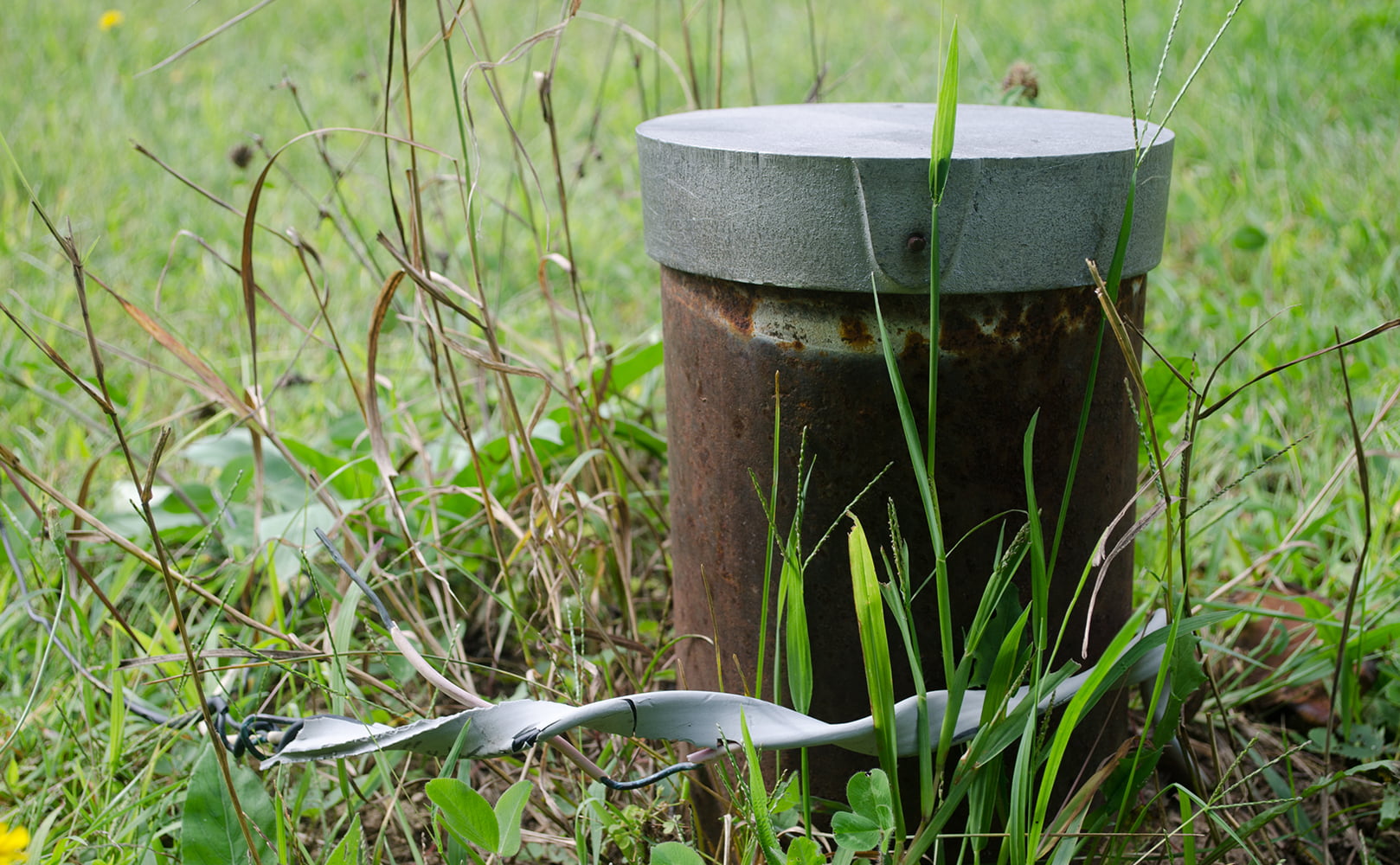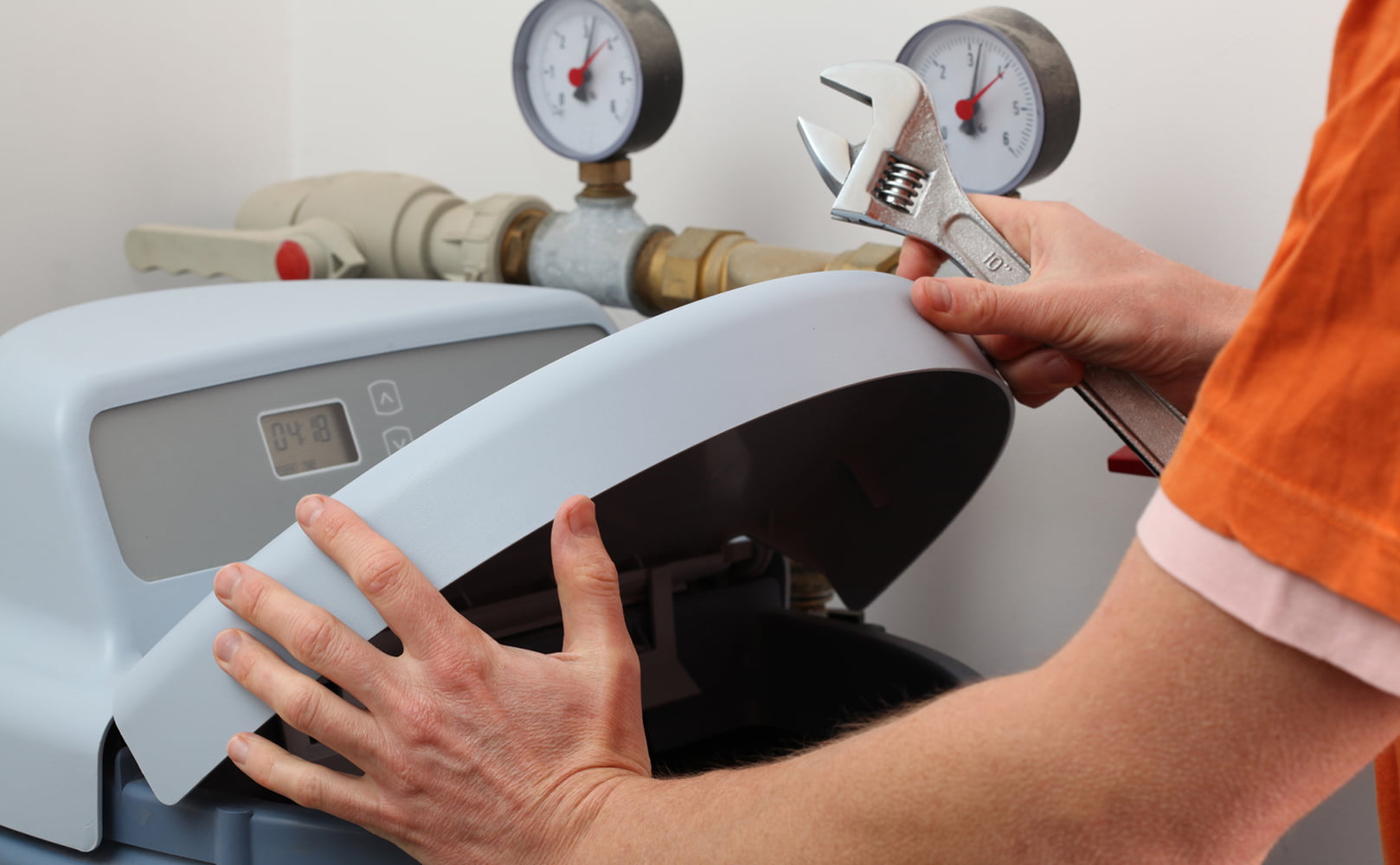Does Reverse Osmosis Work on Well Water? Is It Good?
Written by: Alexandra Uta // Last Updated: Mar 5, 2023
This page may contain affiliate links. If you buy a product or service through such a link we earn a commission at no extra cost to you. Learn more.
Untreated well water can contain a wide range of contaminants, including microbes, nitrates, and arsenic.
Reverse osmosis is an effective water filtration method, but if you’re wondering if it works for well water, keep reading.
In this article, you’ll find out if reverse osmosis is good for well water and what you should consider before installing an RO system on your well.
Key Takeaways
- Yes, reverse osmosis works on well water, and it works really good.
- Reverse osmosis is often the only solution to eliminate a combination of hard-to-remove contaminants likely found in well water. These contaminants include VOCs, nitrates, arsenic, sodium, chloride, sulfate, overall TDS, and other organic and chemical contaminants.
Does Reverse Osmosis Work on Well Water? Is It Good?
So, is reverse osmosis good for well water?
Yes, reverse osmosis is an excellent method for removing stubborn contaminants like arsenic, nitrates, and total dissolved solids (TDS) from well water.
For homes in agricultural areas, well water is very susceptible to serious contamination because the chemicals used on the farmlands often seep into the groundwater and into wells. To tackle this contamination, people in these areas often filter their well water with whole house RO systems. This is mainly because reverse osmosis is one of the best methods for purifying heavily contaminated water.
Well water in homes close to industrial sites may also contain high amounts of microplastics, volatile organic compounds (VOCs), harmful chemicals, and heavy metals among other stuff. Reverse osmosis – used at the point of use or at the point of entry – is the best solution for dealing with all of these problems at once.
What Is Reverse Osmosis and How Does It Work for Well Water?
Reverse osmosis is the process of filtering water through a semipermeable membrane. This RO membrane has tiny pores that trap contaminants as small as .0001 microns, preventing them from flowing into the filtered water.
For well water, reverse osmosis usually comes with different pre-treatment stages before the primary RO membrane. The pre-filters may eliminate hardness-causing minerals (water softener), sediments (sediment filter), and some chemicals (carbon filter) that could damage said membrane. You may also find pre-filters for iron, manganese, sulfur – you name it.
After the primary reverse osmosis purification, some RO systems (mostly whole house systems) may pass the water through post-treatment, adjusting pH levels (calcite filter) and eliminating microorganisms (UV system).
What Does RO Remove from Well Water?
In combination with the right pre and post-treatment, reverse osmosis removes up to 99% of impurities present in well water. These include nitrate, TDS, arsenic, sodium, chloride, sulfate, lead, and other organic and chemical contaminants.
How Do I Know If I Need Reverse Osmosis for My Well Water?
Whether or not you need an RO system depends on the type of contaminants in your well water – and combinations thereof. For instance, if your water contains dangerous levels of arsenic, pesticides, nitrates, plus very high TDS, you likely need a reverse osmosis system.
The surest way to know what contaminants are in your water is to do an in-depth water test. Besides, remember that even if your well water tastes and smells fine, it could still contain dangerous pollutants.
The most dangerous pollutants are usually tasteless and odorless. So, only a well water test can tell you if you need an RO system or not.
Testing Your Well Water
The surest way to test your well water is by paying a certified laboratory. It’s a straightforward process: You send your well water sample to the lab and wait a few weeks to get the test results. They will show the types of impurities in your water and their concentration. The report may also point out which contaminants are above the safety level.
Challenges: What to Consider Before Installing a Reverse Osmosis System on Well Water
If a water test confirms that you need a reverse osmosis system for your well, the next step is to install one. But before you go out and just buy any RO system, consider the following:
System Type
RO systems come in different types: Under sink being the most popular, countertop, and whole house.
Under Sink vs. Whole House RO Systems
Under sink (point-of-use) systems filter only the water at your kitchen sink. That means you get filtered water only for drinking and cooking.
Whole house (point-of-entry) systems filter the entire home water, including water for showering and laundry. This means that whole house RO systems protect your plumbing and appliances, too, and even prevent stains on your plumbing fixtures and glassware. Unlike under sink filters, they provide your entire home with complete filtration coverage.
Pre-Treatment of Your Well Water
Point-of-use systems come with pre-treatment filters built in. But if your well water is very dirty, you may want to get an extra sediment pre-filter. A water softener may also be required.
If you’re using whole house reverse osmosis, you must install pre-treatment (especially if the water is highly contaminated). The type of pre-treatment required depends on the state of your water. For example, if your well contains high levels of chlorine and sediment, you need carbon and sediment pre-filters. If you have iron, get an iron pre-filter, and so on.
Proper pre-treatment is crucial for making whole house RO systems work effectively and for a long time, and this pre-treatment includes removing contaminants/impurities like sulfur, iron, tannin, manganese, chlorine, chloramine, hardness minerals, and other elements commonly found in well water.
System Sizing, Post-Treatment, Space Requirements
For whole house systems, you need to consider the size of the system and compare it to your home water usage. Make sure to choose a system with a suitable water output and an adequately-sized storage tank. Post-treatment is also necessary since RO water is usually acidic. Post-treatment helps to balance your water’s pH and prevent pipe corrosion.
Another thing to remember is that whole house RO systems also take up a lot of indoor space. So if you’re going for one, be sure you have enough room for a 6-feet tall tank, pre and post-filtration, the main RO system module, and a water pump.
Wastewater
Wastewater is inevitable in reverse osmosis water purification. Depending on your setup, you’ll waste at the very least 1 gallon per 5 gallons of treated water.
Water Pressure
Reverse osmosis requires high feed water pressure to work. And if your water contains dissolved solids, an RO system will require an even higher water pressure. You may need to increase your home’s water pressure before installing an RO system on your well water.
Installation + Maintenance
Under sink RO systems are reasonably easy to install and maintain yourself. But we can’t say the same for whole house RO. Installation is pretty complex (you may need to hire a professional), and maintenance can be costly.
Is Reverse Osmosis the Best Way to Filter Well Water?
If your well water contains numerous contaminants, a whole house reverse osmosis system is the best way to filter it. Point-of-use RO systems are also great, but you could substitute them with regular under sink, countertop, and pitcher filters — especially those combining several types of filter media.
How Much Does Well Water Reverse Osmosis Cost?
The cost of a well water RO system mainly depends on its type, size, brand, exact filtration process, and any added features present.
- Standard under sink RO systems cost between $150 to $600.
- Countertop units range between $100 and $500.
- Whole house models cost a minimum of $500 (not including necessary equipment like pumps and atmospheric tanks). You’ll also find systems that cost as much as $5,000 and up to $15,000, depending on the size and complexity of the treatment process.
If you have any thoughts about the question, is reverse osmosis good for well water, please don’t hesitate to leave a comment below!
Information provided on BOS is for educational purposes only. The products and services we review may not be right for your individual circumstances.
We adhere to strict editorial guidelines. Rest assured, the opinions expressed have not been provided, reviewed, or otherwise endorsed by our partners – they are unbiased, independent, and the author’s alone. Our licensed experts fact-check all content for accuracy. It is accurate as of the date posted and to the best of our knowledge.



